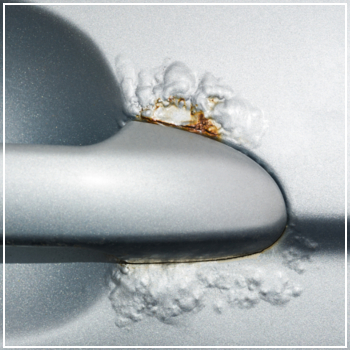 So, you’ve just had your car repainted, and now you're staring at unsightly bubbles or blisters forming on the fresh coat. It's a frustrating situation that usually crops up two to three months after the job is done.
So, you’ve just had your car repainted, and now you're staring at unsightly bubbles or blisters forming on the fresh coat. It's a frustrating situation that usually crops up two to three months after the job is done.
Chances are, this bubbling could be a sign of corrosion starting beneath the surface, but trapped moisture or debris within the paint job might also be to blame. Before you panic and book an appointment, here’s some insight into what could be going on—rust, moisture, and paint application all play a role in this issue.
What Causes Bubbles in Car Paint
Commonly referred to as osmotic blistering, these bubbles form when moisture sneaks into the paint layers. During painting, droplets can get stuck inside or beneath the surface, only to later rise to the top and manifest as visible bubbles or blisters. Once this happens, the best course of action is usually to strip the paint and redo the panel.
Certain factors can increase the likelihood of bubbling, such as:
- Poor weather conditions during application—hot and humid environments trap moisture more easily.
- Applying too much paint too quickly, which traps moisture and solvents underneath.
- Allowing insufficient drying time, leading to trapped debris or moisture in the process.
- If the old paint was stripped but the underlying steel was left exposed for hours, moisture and dirt can accumulate on the surface before being painted over.
- Using low-quality paint thinners can also contribute to this problem.
- Skipping the crucial step of letting the undercoat fully dry before applying the topcoat.
For the trapped moisture to escape, the humidity needs to drop, and temperatures need to rise. If it’s too cold, the moisture can freeze within the paint, causing adhesion problems. Both situations—whether the moisture escapes or freezes—can lead to bubbling, depending on environmental conditions.
Could It Be Rust?
Corrosion is another common cause of bubbling paint, though it involves more than just moisture. For rust to develop, the metal underneath the paint must first be exposed, whether due to a small chip or a larger dent. When this happens, moisture takes advantage of the exposed metal, triggering a chemical reaction that results in rust formation.
Bubbling caused by corrosion tends to be localized in specific areas, particularly where the metal is compromised. By contrast, moisture trapped in the paint may cause bubbles to appear across the entire vehicle surface.
When It’s Not Rust
There are other potential causes of bubbling that aren’t related to rust. One possibility is the speed of application. Applying paint too quickly or standing too close to the surface during the process can trap solvents or create air pockets. These solvents eventually push their way through the outer layer, while air bubbles burst, leaving behind a crater-like texture. While this type of bubbling isn’t as serious, it still requires attention, often involving sanding down the affected area to smooth things out.
Another potential culprit is de-lamination, which occurs when repeated sun exposure weakens the clear coat and underlying paint. Over time, this leads to peeling, bubbling, and eventual flaking of the paint.
No matter how the paint was applied—whether by you or a professional—it’s always worth checking if the bubbling is hiding corrosion. If you notice persistent bubbling or signs of rust, don’t hesitate to reach out. Contact DaSilva’s Auto Body today to schedule a consultation for repainting and rustproofing services.
XGA22,XGA22ACK,XGA22ACK Hydraulic Lift,XGA22ACK Aerial Lift,xcmg, 20m,lift,boom,Hydraulic ,Electric,22M
Xuzhou Xuqi Heavy Machinery Co., Ltd. , https://www.xqheavy.com